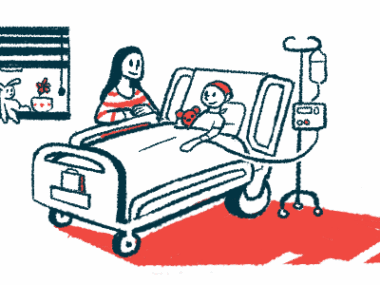aHUS patient still in disease remission 13 years after kidney transplant: Report
No relapses, side effects for US woman treated with complement inhibitors
Written by |

A U.S. woman with atypical hemolytic uremic syndrome (aHUS) has been in disease remission for 13 years while receiving treatment with C5 complement inhibitors after undergoing a kidney transplant, a new report details.
According to the researchers, this is the longest reported case in the literature of an aHUS patient treated with complement inhibitors who did not experience relapses and therapy-related side effects following a kidney transplant.
“Our case highlights the successful long-term use of complement inhibitors in patients with aHUS following renal transplantation,” the researchers wrote, adding that “the advent of complement inhibitors … in [the] treatment of aHUS has revolutionized [disease] management and improved outcomes.”
The study was published as a letter to the editor, titled “Successful 13-year ongoing remission with C5 inhibitor therapy following renal transplant in atypical hemolytic uremic syndrome,” in the American Journal of Hematology.
Woman, then 21, first treated with plasma exchange
aHUS is caused by the abnormal activation of the complement cascade, a part of the immune system, resulting in the formation of blood clots in small blood vessels that may damage internal organs. Although genetic mutations may increase a person’s risk of developing aHUS, a triggering event, such as an infection, is usually needed for the disease to manifest.
In patients, aHUS is generally characterized by three main symptoms: hemolytic anemia, thrombocytopenia, and acute kidney failure. Hemolytic anemia occurs when oxygen-carrying red blood cells are destroyed faster than they can be made, which is known as hemolysis. Thrombocytopenia is marked by low levels of the platelets that help the blood to clot. Acute kidney failure occurs when the kidneys are no longer able to function normally.
Soliris (eculizumab) and Ultomiris (ravulizumab), both marketed by Alexion Astrazeneca Rare Disease, are complement inhibitors that are widely approved to treat aHUS. Both suppress complement activation by targeting a complement protein called C5. These treatments also have been used in aHUS patients receiving a kidney transplant to reduce the risk of disease recurrence and organ rejection — particularly in patients at a higher risk of relapses.
Now, a team of researchers in Rochester, New York, reported the case of a woman who has been in remission for more than a dozen years while receiving treatment with C5 inhibitors after undergoing a kidney transplant.
The woman initially was treated at age 21 for a partial seizure, high blood pressure, acute kidney failure, anemia, and severe thrombocytopenia. Laboratory analyses were consistent with a diagnosis of aHUS.
Subsequent genetic testing revealed the woman had mutations in the CFI and THBD genes, which have been previously associated with the development of aHUS.
She started treatment with plasma exchange and dialysis, together with anti-seizure medications. Although there was a marked improvement in blood-related parameters of anemia, the patient had to remain on dialysis due to end-stage kidney disease.
Disease remission continues for patient with ongoing treatment
One year later, the woman successfully underwent a kidney transplant. After that, she started treatment with Soliris, which was administered at a dose of 900 mg every two weeks, along with other immunosuppressants. She was kept on Soliris for 10 years without having any episode of disease recurrence, and while maintaining normal levels of complement activity.
She then switched to Ultomiris, which was given at a dose of 3,300 mg every eight weeks, or about two months, after an initial loading dose. She reported a decrease in fatigue after stopping Soliris, and has been receiving Ultomiris for the last three years, still without any instance of disease recurrence or side effects.
While there is increasing interest in discontinuation of complement inhibitor therapy, existing reports show increased risk of aHUS relapse in patients with [kidney] transplant.
“While the current standard of care for aHUS is indefinite therapy with complement inhibitors, this long-term maintenance approach is associated with issues for patients including frequent visits for infusion [and] financial toxicity, as well as an increased risk of infection,” the researchers wrote.
“While there is increasing interest in discontinuation of complement inhibitor therapy, existing reports show increased risk of aHUS relapse in patients with [kidney] transplant,” the team wrote.
For this individual patient, the researchers noted, ongoing treatment has resulted in continuing disease remission.
Thus, the team noted that “further studies are needed to clearly delineate risk of relapse in this population.”







